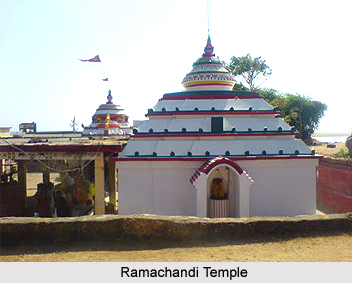 Ramachandi Temple is located in the Puri District in the Indian state of Orissa. The temple situated at a distance of 5 kms from Konark, is on the banks of Kushabhadra River that later drains into the Bay of Bengal. The presiding deity of the temple is thought to be Goddess Ramachandi while few feel it to be temple of Mayadevi, wife of Lord Surya.
Ramachandi Temple is located in the Puri District in the Indian state of Orissa. The temple situated at a distance of 5 kms from Konark, is on the banks of Kushabhadra River that later drains into the Bay of Bengal. The presiding deity of the temple is thought to be Goddess Ramachandi while few feel it to be temple of Mayadevi, wife of Lord Surya.
Legend of Ramachandi Temple
According to the legend once a Hindu Brahmin, Kalapahad converted to Islam. He stood against Hinduism and undertook the decision to destroy all Hindu temples. He demolished the Sun temple and then marched towards Ramachandi temple. Upon his arrival Goddess Ramachandi transformed into a Maluni i.e. a maid servant and appeared before him. She requested him to wait at the entrance door while she came back with water from the river for the Goddess. Kalapahad waited impatiently for a long time for the Maluni and then went inside the temple only to find the throne of the goddess empty. He imagined that the Maluni had taken away the idol with her and began tracing her. He reached the bank of the Kushabhadra River and saw the idol of the deity floating in the water. As the river was flooded then, Kalapahad could not reach out for the idol. Later Goddess Ramachandi appeared in the dream of a priest and instructed him to construct a temple on the bank of the Kushabhadra River. The sage followed the instructions of the deity and built the temple and installed the image of the goddess.
Construction of Ramachandi Temple
Ramachandi Temple is regarded as one of the Shakti Peethas of Orissa. Ramachandi, the presiding deity of Konark is regarded as goddess Chandi. The deity is seated on a lotus flower in a small temple. Thick growth of Casuarina plantations encloses the temple on all its sides.
Ramachandi Temple built on the on the banks of Kushabhadra River also serves as a picnic spot for tourists. Prior to the construction of the Marine Drive road, the region was not much accessible. Presently, after its construction the temple attracts pilgrims from different corners. In the month of Ashwin devotees flock the temple to offer sacrifices to the deity.





















